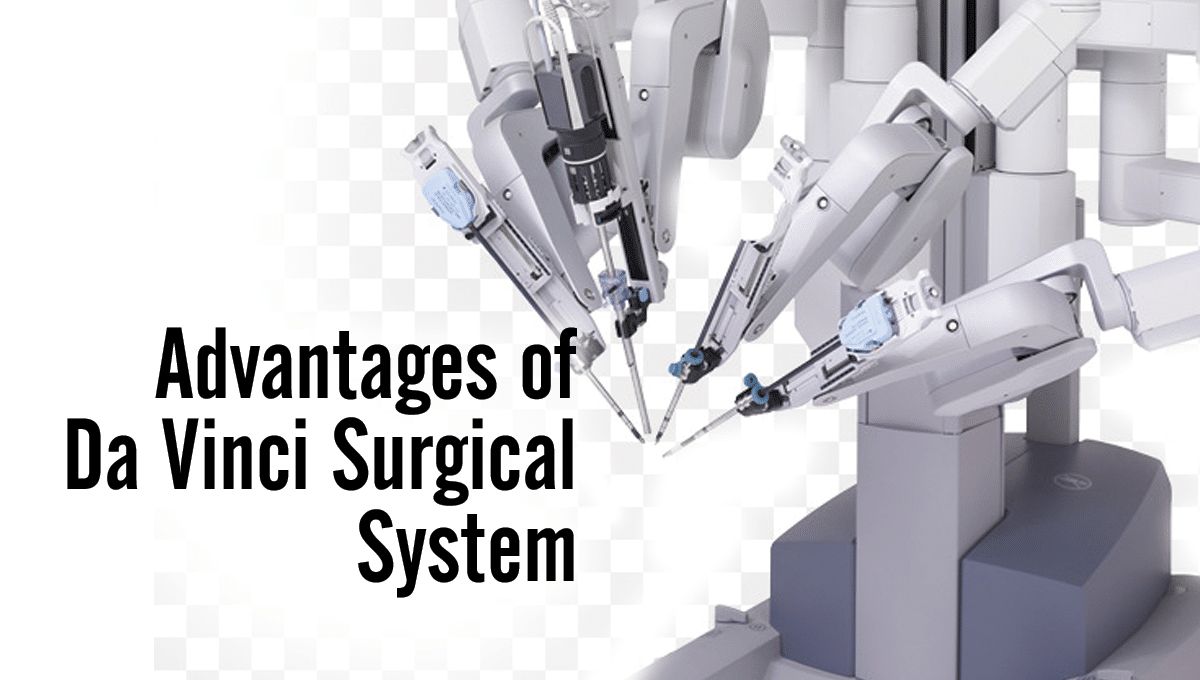The da Vinci surgical system is an advanced and effective tool for performing minimally-invasive surgeries. It is a state-of-the-art tool that makes the most of the surgeon’s skill, expertise and experience in conducting urologic procedures. Known as da Vinci because Leonardo da Vinci devised the first robot and used three-dimensional detail and incomparable anatomical accuracy to give life to his masterpieces, the surgical system gives physicians such precision and detail that it effectively simulates an open surgical environment while allowing the use of tiny incisions.
How does the da Vinci system work?
The da Vinci surgery is robot-assisted and minimally-invasive, done via small incisions. The robot’s hands offer a high degree of dexterity, which enables surgeons to operate in the very tight spaces and delicate tissues of the genitourinary tract that otherwise would only be accessed through the longer incisions of open surgery. The da Vinci robot is a self-empowered, computer-controlled device that has been programmed to help in the positioning and maneuvering of surgical instruments. It gives surgeons better precision, flexibility, accuracy and control over surgical procedures.
When using the da Vinci system:
1. The urologist operates from a computer console situated in the operating room, directing and manipulating miniaturized instruments mounted on 3 robotic arms to create small incisions in the patient.
2. During the procedure, the doctor looks through a 3D camera attached to a fourth robotic arm that magnifies the surgical site.
3. The hand, wrist and finger movements of the surgeon are transmitted straight through the computer console and to the instruments attached to the robotic arms, resulting in mimicked movements with the same range of motion as that of the surgeon and allowing maximum control.
4. The robot is supervised by the surgical team at the patient’s bedside.
What are the advantages of the da Vinci surgical system?
1. It ensures that surgeries are more precise by providing better visualization, improved dexterity and greater accuracy.
2. It enables surgeons to conduct complex surgical procedures using tiny incisions.
3. It replicates the surgeon’s technique and movements in real-time, with the surgeon seated just a feet away from the patient viewing an actual image of the operating field while performing the procedure in real-time by manipulating a miniaturized instrument and using tiny incisions.
4. It transmits force feedback sensations from the operating field to the surgeon, which are then used as a substitute for tactile sensations and are augmented by the superior vision offered by the high-resolution 3D view to deliver better visualization, accuracy and precision.
The da Vinci is designed to ensure that both simple and complex procedures are done using incisions of 1-2 cm (also called operating ports), potentially resulting in:
1. Reduced trauma, pain and discomfort to patients
2. Fewer complications
3. Shorter recovery time and quicker return to routine activities
4. Minimal scarring
5. Reduced blood loss and need for transfusions
6. Minimal hospitalization costs
At Advanced Urology Institute, we have incorporated the da Vinci surgical system into our practice. Over the years, we have been able to use the increased range of motion, improved visualization, enhanced dexterity and greater surgical precision offered by the robotic system to deliver improved treatment outcomes to our patients. We are also proud of the skilled and experienced professionals at AUI whose training, fortitude, passion and expertise in the use of advanced technologies have enabled us to provide the best possible care to our patients. For more information on our services, visit the “Advanced Urology Institute” site.




